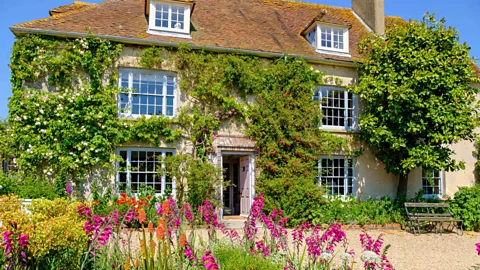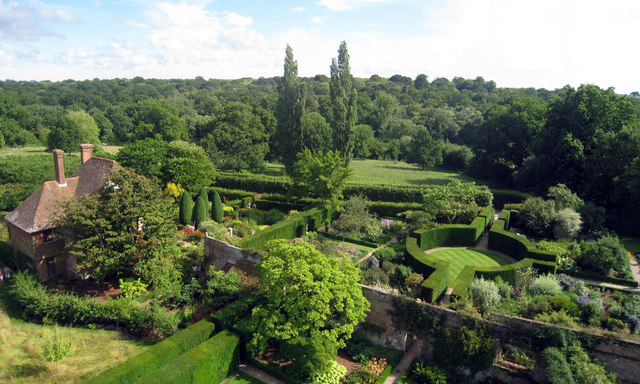The Enchanting Gardens of the Bloomsbury Group
The Bloomsbury Group, a collective of English writers, intellectuals, philosophers, and artists, is renowned not only for their contributions to literature and art but also for their stunning bohemian gardens.
These gardens, often extensions of their unconventional lifestyles, provided the perfect backdrop for creativity and contemplation.
This article delves into the enchanting gardens of the Bloomsbury Group, exploring their historical significance, unique designs, and enduring legacy.
The Bloomsbury Group: A Cultural Phenomenon
Origins and Influence
The Bloomsbury Group emerged in the early 20th century, centered around the Bloomsbury district of London. This informal collective included figures such as Virginia Woolf, E.M. Forster, John Maynard Keynes, and Vanessa Bell. They were united by a shared belief in the importance of the arts and a rejection of the rigid Victorian social norms.
The group's influence extended beyond literature and art into economics, philosophy, and social reform. Their progressive ideas and avant-garde lifestyles were often reflected in their living spaces, particularly their gardens. These gardens were not merely aesthetic creations but integral parts of their homes and creative processes.
The Role of Gardens in Their Lives
For the Bloomsbury Group, gardens were sanctuaries where they could escape the bustle of London, engage in deep conversations, and find inspiration.
These spaces were designed to foster creativity, offering both seclusion and communal gathering spots. The gardens reflected the group's appreciation for nature, beauty, and tranquility.
The Iconic Gardens
Charleston: Vanessa Bell and Duncan Grant’s Artistic Haven
 Charleston, located in Sussex, was the country home of Vanessa Bell and Duncan Grant. This farmhouse became a central hub for the Bloomsbury Group, where members would retreat for weekends and holidays.
Charleston, located in Sussex, was the country home of Vanessa Bell and Duncan Grant. This farmhouse became a central hub for the Bloomsbury Group, where members would retreat for weekends and holidays.
The garden at Charleston is a masterpiece of bohemian design, blending art and nature seamlessly.
Design and Aesthetics
The garden at Charleston is characterized by its informal layout, vibrant flower beds, and artistic touches.
Vanessa Bell and Duncan Grant adorned the garden with sculptures, mosaics, and painted furniture, creating a living artwork.
The design prioritizes a natural, almost wild aesthetic, with an abundance of colorful flowers, herbs, and climbing plants.
Influence and Legacy
Charleston’s garden has become an enduring symbol of the Bloomsbury Group’s creative spirit. Today, it remains a popular destination for visitors who wish to experience the atmosphere that inspired some of the 20th century's greatest artists and writers.
Monk’s House: Virginia Woolf’s Rural Retreat

Monk’s House, in Rodmell, East Sussex, was the country home of Virginia and Leonard Woolf. The garden at Monk’s House was Virginia Woolf’s sanctuary, a place where she could write, reflect, and find solace from her tumultuous inner world.
A Writer’s Sanctuary
Virginia Woolf often wrote in a small lodge at the end of the garden, surrounded by nature.
The garden itself was a blend of carefully curated plants and wild areas, reflecting Woolf’s love for the English countryside. Roses, irises, and fruit trees created a picturesque and serene environment.
Preservation and Public Access
Today, Monk’s House and its garden are preserved by the National Trust. Visitors can explore the spaces that inspired Woolf’s literary masterpieces, gaining insight into the profound connection between her writing and her environment.
Sissinghurst Castle: Vita Sackville-West’s Romantic Vision
 Though not officially a member of the Bloomsbury Group, Vita Sackville-West was closely associated with its members, particularly Virginia Woolf. Sissinghurst Castle, her home in Kent, features one of England’s most famous gardens.
Though not officially a member of the Bloomsbury Group, Vita Sackville-West was closely associated with its members, particularly Virginia Woolf. Sissinghurst Castle, her home in Kent, features one of England’s most famous gardens.
The White Garden
The White Garden at Sissinghurst is perhaps its most iconic feature. Designed by Sackville-West and her husband, Harold Nicolson, this garden is renowned for its monochromatic planting scheme. White flowers and silver foliage create a strikingly elegant and ethereal space.
A Garden of Rooms
Sissinghurst’s garden is designed as a series of “rooms,” each with its own distinct character and color scheme. This innovative approach to garden design has influenced countless gardeners and landscape architects.
The Enduring Appeal of Bloomsbury Gardens
Inspiration for Modern Gardeners
The gardens of the Bloomsbury Group continue to inspire modern gardeners with their emphasis on natural beauty, creativity, and personal expression.
The informal, artistic approach to garden design championed by the Bloomsbury Group contrasts with the formal, manicured gardens traditionally associated with English country homes.
Literary and Artistic Legacy
The Bloomsbury Group’s gardens are also celebrated for their connection to the group's literary and artistic achievements.
These spaces provided the physical and emotional environment necessary for their groundbreaking work.
The gardens are integral to understanding the context in which the Bloomsbury Group lived and created.
Preservation and Tourism
Many of the Bloomsbury Group’s gardens are now preserved as historic sites, attracting visitors from around the world. These gardens offer a unique glimpse into the lives of some of the 20th century’s most influential cultural figures.
They serve as reminders of the enduring legacy of the Bloomsbury Group and their contributions to art, literature, and garden design.
Conclusion
The enchanting gardens of the Bloomsbury Group are more than just beautiful spaces; they are living testaments to the group's creativity, resilience, and progressive ideals. These gardens provided sanctuaries for contemplation and inspiration, playing a crucial role in the lives and works of the Bloomsbury members.
As we explore these gardens, we gain a deeper appreciation for the intertwined relationship between nature, art, and the human spirit.
The legacy of the Bloomsbury Group’s gardens continues to flourish, inspiring new generations of gardeners, artists, and writers. By preserving and celebrating these spaces, we honor the profound impact that the Bloomsbury Group had on cultural and intellectual life, ensuring that their spirit of innovation and creativity lives on.





































